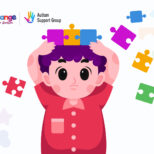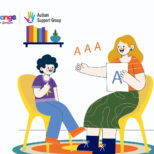Communication Training
Let’s delve into the topic of language development in children with autism and how it relates to the behavioral framework established by B.F. Skinner, including the five behavioral operants he identified.
**1. Intensive Early Intervention for Autism:**
Children with autism often face challenges in communication and social interaction. Research has shown that intensive, early intervention can be highly beneficial for these children. Such interventions focus on increasing the frequency, form, and function of communicative acts. Early intervention aims to equip children with the tools and skills they need to effectively communicate and engage with the world around them.
**2. Communication Deficits in Autism:**
Communication deficits are considered one of the core symptoms of Autism Spectrum Disorder (ASD). These deficits can manifest in various ways, such as difficulty in expressing needs and desires, challenges in understanding and using language, and struggles with social communication, including gestures and nonverbal cues.
**3. B.F. Skinner’s Behavioral Operants:**
B.F. Skinner, a renowned psychologist and behaviorist, contributed significantly to our understanding of language and its development within a behavioral framework. He broke down language into five distinct behavioral operants, which are as follows:
– **Mand:** This operant refers to a communication act driven by a motivating operation. It typically involves making a direct request or demand, such as saying, “I want milk!” The key characteristic of a mand is that it results in immediate reinforcement, meaning the individual is more likely to receive what they’ve asked for.
– **Tact:** Tacting involves observing and describing the environment. It’s when an individual comments on or identifies objects, events, or situations in their surroundings. For example, stating, “The sun is shining,” is a tact.
– **Intraverbal:** Intraverbal responses are essentially verbal interactions with other people. These responses can include answering questions, engaging in conversation, or responding to prompts from others. Intraverbals can be based on tacts or mands, and they help individuals engage in meaningful dialogue.
– **Echoic:** Echoic behavior involves the repetition of verbal behavior produced by others. It’s when a person imitates or echoes what someone else has said. This operant is crucial for language learning, as it helps individuals acquire new words and phrases by mimicking them.
– **Autoclitic:** Autoclitics are a more complex form of language behavior. They involve modifying one’s speech to provide additional context or information. For instance, saying, “I think I want milk,” involves the use of an autoclitic, indicating uncertainty or a change in thought.
**4. Significance for Autism Treatment:**
Understanding these behavioral operants can be valuable in designing effective interventions for children with autism. Applied Behavior Analysis (ABA) is a therapeutic approach that often incorporates Skinner’s principles to teach and reinforce communication skills. ABA programs for children with autism aim to enhance manding, tacting, intraverbal, and echoic behaviors, which can ultimately improve a child’s language development and overall communication abilities.
In summary, B.F. Skinner’s behavioral operants provide a framework for understanding how language develops and is used within the context of behavioral principles. This understanding can be particularly relevant when designing interventions and therapies for children with autism, as it helps address their unique communication challenges.
Good Center with quality staff who work hard in bringing Change in the life of an autistic child which was true in the case of my child who learnt many skills in a period of 16 months. I’m very happy about that. The management keeps monitoring the program of the child periodically. Thanks to the management and the therapists for their dedicated efforts in nurturing the kids. Wishing them all the best….
Children with autism benefit from early, intensive intervention to improve communication skills, which are often impaired in ASD. B.F. Skinner’s five behavioral operants—Mand, Tact, Intraverbal, Echoic, and Autoclitic—provide a framework for understanding language development. These operants encompass various aspects of communication, from making requests (Mand) to describing the environment (Tact) and engaging in conversation (Intraverbal). Echoic behavior involves repeating what others say, while Autoclitic behavior adds context or nuance to speech.
The usual structure in therapy typically involves these key elements:
1. **Assessment:** Gathering information about the client’s concerns and history.
2. **Goal Setting:** Collaboratively defining therapeutic goals and objectives.
3. **Intervention:** Implementing therapeutic techniques and strategies.
4. **Progress Monitoring:** Regularly evaluating and adjusting the treatment plan.
5. **Closure:** Gradual conclusion of therapy with a focus on relapse prevention and coping strategies.
- Consent: Clients must provide informed consent for therapy.
- Qualified Therapist: Therapy should be conducted by a licensed and trained therapist.
- Assessment: A thorough evaluation of the client’s issues is typically required.
- Confidentiality: Therapists must maintain client confidentiality.
- Safety: Ensuring the physical and emotional safety of both parties is crucial.
ABA therapists create personalized plans to teach them to communicate their needs, like asking for things or talking with others. They use tools like pictures or devices if needed. ABA also looks at why someone might have trouble communicating, like when they get upset or frustrated. By working on these skills, people can communicate better in everyday life, like at home or with friends, and have a happier, more fulfilling life.
Communication goals in ABA therapy are highly customized to your child’s current communication abilities and areas needing improvement. These goals can vary widely from child to child. For example, if your child struggles with requesting items they want, one goal might be for them to learn to make requests using words, signs, or a communication device. Another goal might involve teaching them to respond appropriately to questions or engage in back-and-forth conversations. These goals serve as a roadmap for our therapy sessions, guiding our interventions and helping us monitor your child’s progress over time.
In ABA therapy, we use a structured and evidence-based approach to target your child’s speech and language development. We begin by assessing your child’s current communication skills and identifying areas that require improvement. Based on this assessment, we design interventions that are tailored to your child’s specific needs. For speech development, we may focus on articulation, pronunciation, and fluency, using techniques like modeling and shaping to improve speech clarity. For language development, we work on vocabulary expansion, grammar, and social communication skills through activities like storytelling, role-playing, and interactive games. Our methods are flexible and adapted to your child’s progress, ensuring that we provide the most effective support for their speech and language development.





